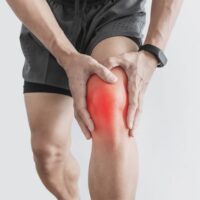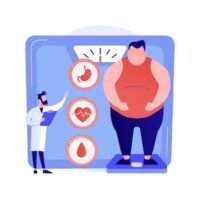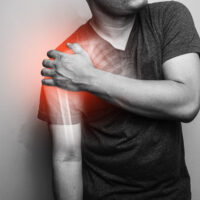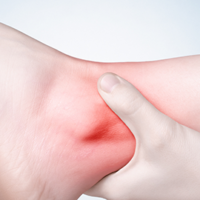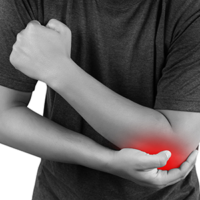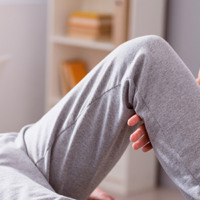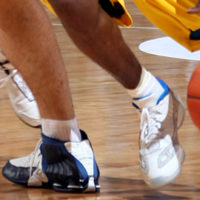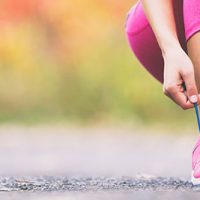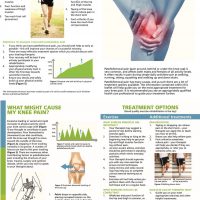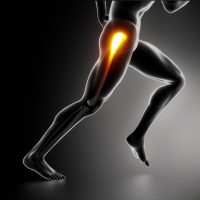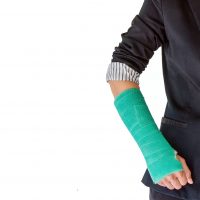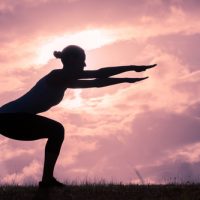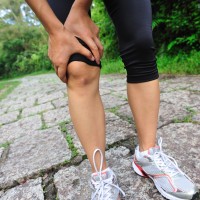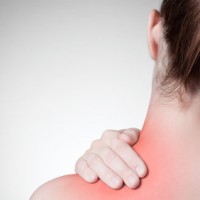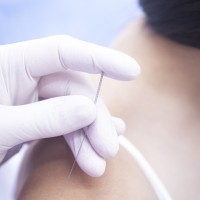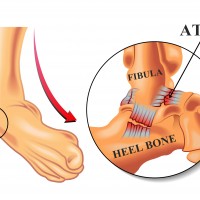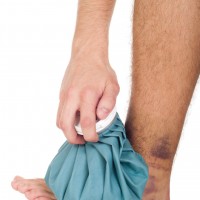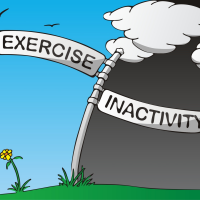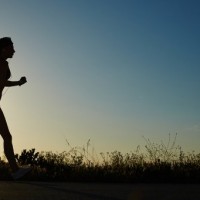Exercises for managing Knee Osteoarthritis 10 January, 2024 - Knee osteoarthritis (OA) can be a challenging condition, impacting mobility and reducing the quality of life for many people. Did you know that a chartered Physiotherapist can play an important role in managing knee OA? Understanding Knee Osteoarthritis Before exploring the benefits of physiotherapy, it is important to have a basic understanding what osteoarthritis is. […]
Lifestyle Overhaul? 18 October, 2023 - Do you have a niggling feeling that your lifestyle needs an overhaul? Do you know what the signs and symptoms are that you need to make some changes? Find out about Metabolic Syndrome and if it could apply to you……. Metabolic syndrome is not a disease in itself. It is actually a group of risk […]
Rotator Cuff Related Shoulder Pain 31 May, 2022 - What is Rotator Cuff Related Shoulder Pain? “Rotator Cuff Related Shoulder Pain” The rotator cuff is made up of a group of muscles that help keep the head of the humerus bone (‘the ball’) in the shoulder socket. The rotator cuff muscles are also involved in moving your arm up and out to the side […]
What is a ‘Sports Physio?’ 27 August, 2021 - DO I NEED TO SEE A ‘SPORTS PHYSIO’? The term ‘sports physio’ is used a lot, and you if you are involved in sport and get injured, you may be advised to seek out a ‘sports physio’. So, what is a ‘Sports Physio’? Sports Physiotherapy’ (or sports physio) is a specialist area of physiotherapy […]
Physio for Headache 12 March, 2021 - Physiotherapy and headaches Did you know that many headaches originate from the neck? These headaches are known as Cervicogenic Headaches (CGH), and they occur due to some dysfunction in the upper 3 segments of the spine. Thankfully, physiotherapy can help with the treatment and management of a CGH. What causes Cervicogenic Headaches? A mechanism known […]
Back pain and working from home 26 February, 2021 - For many of our patients at IONA Physiotherapy in Drumcondra, ever-increasing computer usage can be associated with neck, shoulder and even arm pain. Often, if the computer workstation is not set up well, this neck and shoulder pain gets worse, the longer you spend at your computer. Sound familiar? The good news is, […]
Ankle pain and how to treat it 26 February, 2021 - What causes ankle pain? There are many reasons someone may suffer from ankle pain. For the purpose of this article, we will focus on one of the most common ankle injuries, namely a lateral ankle sprain. Injury to one or more of the lateral ankle ligaments typically happen when you ‘roll your ankle’. This is […]
What’s Behind Our Name? 25 November, 2020 - . So many people have asked us down through the years how we came up with the name ‘IONA Physiotherapy’. Firstly, it’s not a misspelled version of “I own a physiotherapy practice”. Secondly, we do not have any links to the Iona Institute! Historical Roots Many of the streets in the surrounding area of Glasnevin […]
Hamstring Muscle Injuries 11 March, 2020 - Hamstring Muscle Injuries If you are involved in sport, at any level, you will know someone who has had a hamstring injury, or you may have even had a hamstring injury in the past yourself. What are the hamstrings? They are a group of muscles located at the back of your thigh. Their primary […]
Tips for dealing with Tennis Elbow 25 October, 2019 - If you’ve ever had pain on the outside of your elbow with gripping objects or lifting, you’ll understand just how annoying it can be not to be able to use your arm properly. Tennis elbow, known as “lateral epicondylalgia” in medical circles, is very common, affecting roughly 3% of the population. It […]
What to Expect When You Attend Your Chartered Physiotherapist 24 September, 2019 - Your first Physiotherapy Session Your first visit with a Physiotherapist will involve us asking you some questions and listening to your story regarding the history of your injury or condition. We will also take a detailed medical history. This allows your Physiotherapist to gain a better understanding of you and your problem and helps […]
Basketball Injuries and Lateral Ankle Sprains 11 March, 2019 - . Basketball is a non-contact sport, but this doesn’t make it a non-physical sport! As a sport, it involves complex movements including jumping, abrupt turns, changes of direction and deceleration, moderate- to full-speed running, side-stepping and back-peddling. Several research studies published looking at injuries in basketball have shown that the body parts that are most […]
VHI Women’s Mini Marathon for newbies 8 February, 2019 - Even though it’s early February, many of you out there are already planning to do the VHI Women’s Mini Marathon in June as a running newbie. You may have already started on a Couch-to-5k programme, you’re following your own training programme from a running magazine or website or have taken those tentative first strides […]
Patellofemoral pain 16 February, 2018 - Patient education leaflet, taken from international experts in Patellofemoral pain- Barton and Rathleff 2016.
Back Pain Quiz 10 February, 2018 - Which of the following statements are True or False: Bed rest is helpful for back pain. Back pain is caused by something being out of place Exercise is safe and good for back pain. Heavy school bags cause back pain Stress, low mood and worry influence back pain Answers: 1.False. In the first […]
Greater Trochanteric Pain Syndrome 24 November, 2017 - Otherwise known as GTPS, can be one of the causes of pain on the outside of the hip. GTPS involves the tendons and bursae (small fluid filled sacs) which surround an area of bone on the outside of the hip known as the greater trochanter. Symptoms include pain lying on that side, pain on […]
Physiotherapy after a Fracture 15 September, 2017 - 1.Seek advice from your physiotherapist about which exercises you can do from the outset, even if you are being immobilised in a cast. For example, if in a cast for a wrist fracture, moving the joints above (neck, shoulder and elbow) and below (hand) will reduce the amount of physiotherapy you need afterwards. Seek advice, […]
Tendinopathy 22 July, 2017 - The achilles tendon at the back of the ankle is one of the the more commonly known tendons in humans, it connects the calf muscle to the heel bone. Tendons connect muscles to bones. Pain and dysfunction in a tendon is known as tendinopathy (previously known as tendonitis.) So, how do tendons become injured? Every […]
Best Technique for Squat 28 June, 2017 - Poor squatting technique can adversely load the body, leading to injury e.g. spine, hip and knee. It is useful to use a mirror from the side and then the front in order to check the technique of your squat. With good squatting technique, you should certainly feel your muscles working but no feeling of strain […]
Top tips for your workstation, from IONA Physiotherapy in Drumcondra 21 January, 2017 - For many of our patients at IONA Physiotherapy in Drumcondra, ever increasing computer usage can be associated with neck, shoulder and even arm pain. Often, if the computer workstation is not set up well, this neck and shoulder pain gets worse, the longer you spend at your computer. Sound familiar? The good news […]
Inspired by the Dublin City Marathon to start Recreational Running? 29 October, 2016 - This weekend will see almost 20,000 people take to the streets of Dublin to participate in the annual Dublin City Marathon. If this inspires you to think about taking up running, there are some helpful tips you should know to reduce your risk of developing a musculoskeletal injury. In April, Louise took part in […]
Whiplash – a Pain in the Neck 2 August, 2016 - Whiplash Definition Whiplash (or Whiplash Associated Disorder) occurs when your head and neck is suddenly jolted backwards and forwards (or forwards then backwards) in a whip-like movement, or is suddenly forcibly rotated which may occur in a rear-end or side impact car accident. This may cause, neck muscles, ligaments and joints of the neck to […]
Dry Needling 30 November, 2015 - What is dry needling? Dry needling is a technique which involves the insertion of a single use, sterile, acupuncture needle into a myofascial (muscular) trigger point. A trigger point is a tight band within a muscle which can cause and contribute to pain within the body. Research has shown that biochemical changes occur in these […]
Ankle Sprain- Rory McIlroy 11 July, 2015 - Rory McIlroy recently sustained a lateral (outer aspect of ankle) sprain while playing soccer with friends. Unfortunately for Rory, this will keep him out of this year’s British Open Championship. According to media reports, he sustained a ruptured ATFL and a tear of his joint capsule. So, how does such an injury occur, what is […]
Golf Physiotherapy and TPI 30 May, 2015 - What is TPI? Titleist Performance Institute (TPI) is the world’s leading educational organization dedicated to the study of how the human body functions in relation to the golf swing. TPI was founded in 2003 and over the last 12 years it has studied thousands of golfers of all abilities. From these studies, TPI has collected […]
Clinical Pilates – has started at IONA Physiotherapy! 23 March, 2015 - What is Pilates? Pilates is a whole body type of exercise that focuses on strengthening (particularly deep abdominal, back and shoulder blade muscles), flexibility, co-ordination and breathing. This total body workout promotes muscle balance and postural awareness. It is therefore favoured by athletes who want to avoid injury, those rehabilitating following an injury, people who […]
Ice or Heat? 12 September, 2014 - A common question that we are often asked in clinic is whether ice or heat is apppropriate to use on an injury and if so, which. In this blog we will outline the rational behind choosing ice or heat and give some common clinical examples. When ice is placed on an area it causes constriction […]
Exercise is Medicine 13 August, 2014 - There is overwhelming evidence that exercise has very wide-ranging health benefits, and many health professionals argue that the absence of regular exercise is the biggest public health issue of our time. Most of us recognise that smoking, diabetes and obesity are bad for our health. “Smokadiabesity” is a slightly humorous word sandwich term that has […]
What are Overuse Injuries? 1 August, 2014 - Injury can occur when a high load is applied a small number of times (e.g. fall off the top of a ladder) or a small load is applied numerous times (e.g. long distance running.) It is the latter that can lead to overuse injuries. Individual tolerance levels vary, meaning that some people can develop an […]
Am I at risk of a Running Injury? 23 July, 2014 - For recreational runners the incidence of running related injuries is 10 per 1000 hours of running, which is relatively high compared to other sports. Knee injuries, such as Patellofemoral Pain syndrome are the most common (19%), followed by foot injuries (17%), such as plantar fasciitis or stress fracture, but lower back, thigh, lower leg and […]
- +353 1 797 9545
- Cian House, 1 Cian Park, Drumcondra, Dublin 9, D09 K7F8

